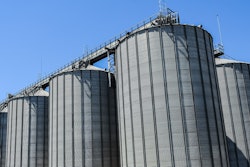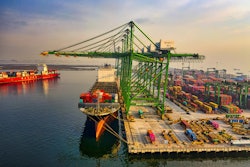
TheOregon Transportation Commissionapproved a $2.1 million grant for theMorrow County Grain Growers (MCGG)cooperative to expand itsrail-to-barge grainfacility at thePort of Morrowon the Columbia River.
The grant will cover two-thirds of the project’s $3 million dollar cost. The MCGG board, which is responsible for the final costs not covered by the grant, must issue the final approval.
Only grain facility on the Columbia River
The Port of Morrow facility is currently the only one on the Columbia River that can unload grain from rail cars into barges headed to downstream export elevators, noted theUSDA.
MCGG is a cooperative founded in 1930 that is owned by about 800 growers, operates eight grain elevators in total with a total licensed capacity of 6.2 million bushels. Over the years it has diversified into fertilizer, chemicals, feed and seed, propane gas and farm equipment sales.
New expansion details
The Port of Morrow facility was last expanded in 2018-19 with the assistance of an almost $20 millionU.S. Department of Transportation Better Utilizing Investmentsto leverage development grant.
That project extended new rail lines from theUnion Pacificmainline to four terminals to enable rail-to-barge access for shipments along the Columbia River.
The project included infrastructure improvements to facilitate intermodal operations, including new bridges, connecting roads, and Terminal 1 improvements.
The newest expansion project will install a new 600,000-bushel grain bin and associated conveyors that will connect it to the existing facility.
Six grain bins stood at the Morrow location when the cooperative built the $7.5 million rail-to-barge system, whose costs included installation of a seventh bin.
The project recently approved forConnect Oregongrant funding will bring the number of bins at the location to eight, with room for five more and a grain bunker left at the site.
According toU.S. Army Corps of Engineers data, from 2016 to 2020, grain shipments originating or moving through the Columbia River system ranged between 27.5 million tons and 33.8 million tons — or 66% to 74% of all shipments on the river.
From 2016 to 2020, wheat was the primary grain commodity shipped on the Columbia, with shipments ranging between 12.7 million tons and 16.4 million tons.





















